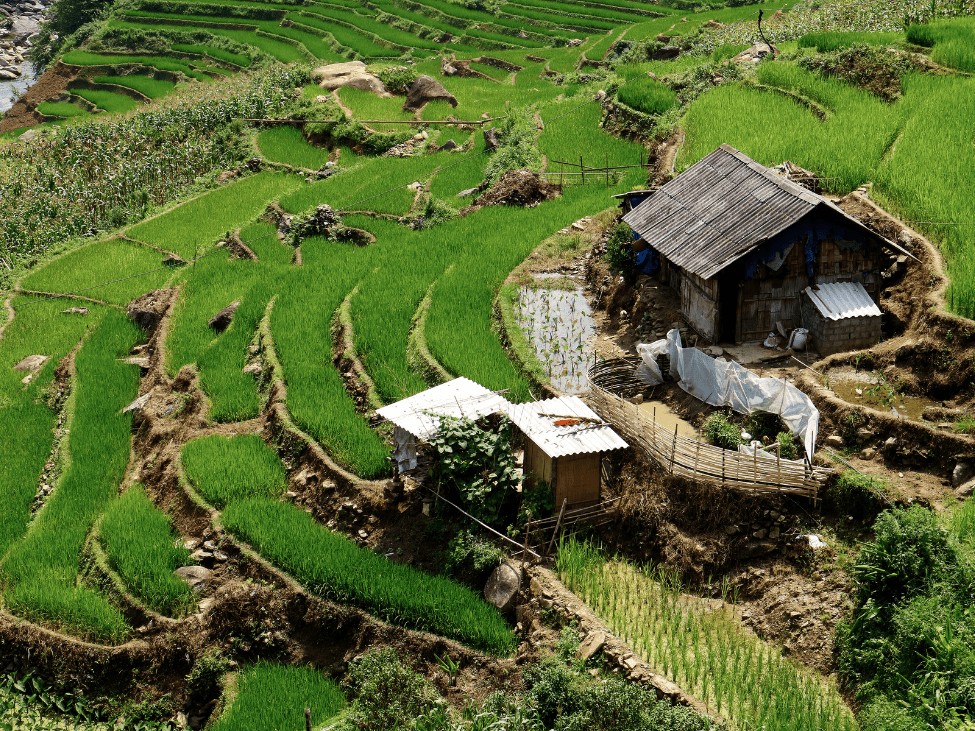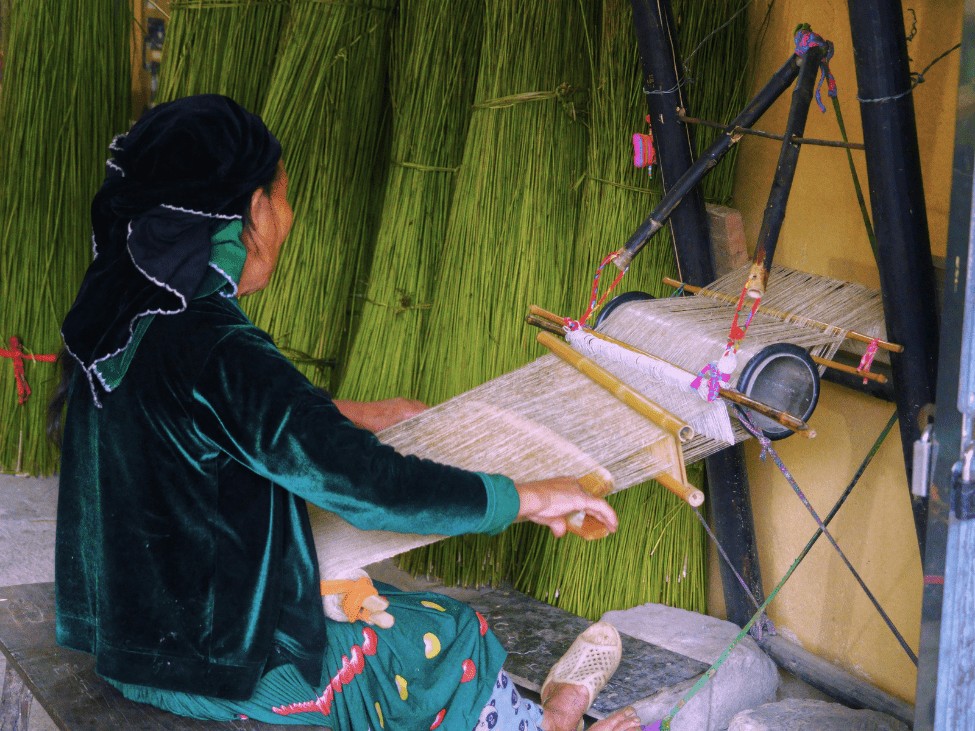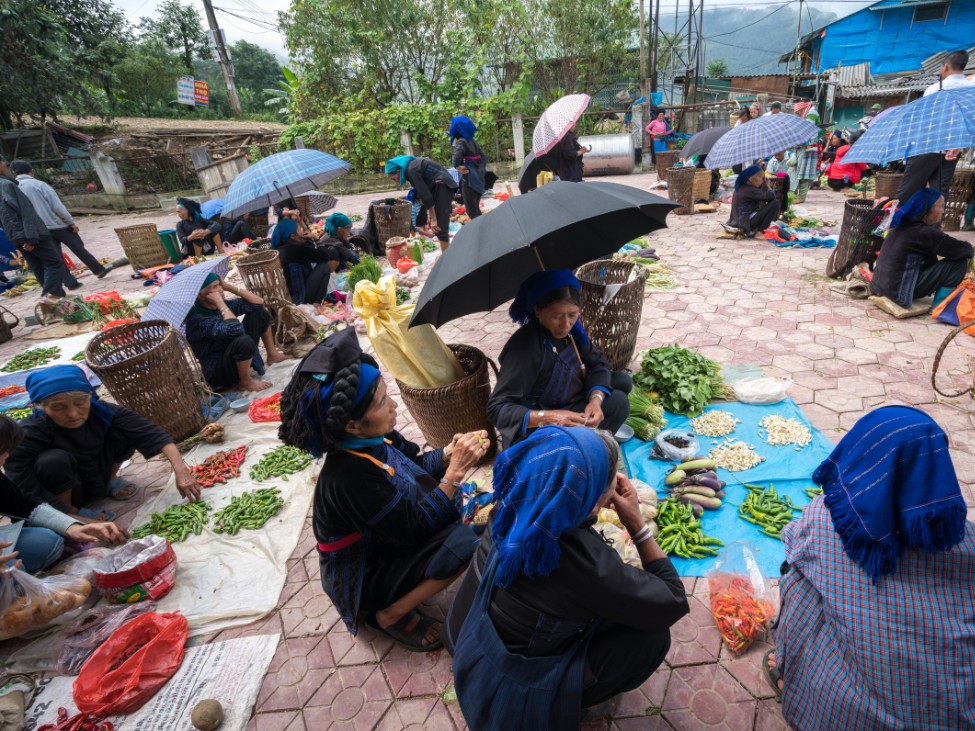Experiencing Muong culture authentically involves immersing yourself in their daily life, traditions, and environment. SIXT.VN offers a variety of services designed to help you discover the best of Muong culture. This includes homestays, cultural festivals, and insightful museum visits. To authentically experience Muong culture, consider exploring the countryside and historical sites surrounding Hanoi.
1. Understanding the Muong Ethnic Group
The Muong people are one of Vietnam’s four main ethnic groups, closely related to the Kinh, and possess a rich cultural heritage distinct from the rest. Their traditions, language, and social structure offer a fascinating glimpse into Vietnam’s diverse cultural tapestry. They mainly reside in Hoa Binh province and parts of Thanh Hoa, Phu Tho, and Son La. Understanding their history and societal norms enhances the authenticity of any cultural exploration.
1.1. Historical Context
The Muong are believed to be among the earliest inhabitants of northern Vietnam. Their historical roots are intertwined with the Kinh people, with linguistic and cultural similarities pointing to a shared ancestry. They have maintained their distinct identity through unique customs and traditions, which sets them apart in Vietnam’s multi-ethnic landscape. Their society was traditionally organized around a system of “lang” or chiefdoms, each led by a local noble.
1.2. Social Structure and Customs
Muong society is characterized by a hierarchical structure, with a strong emphasis on community and family ties. Traditional Muong villages consist of stilt houses clustered together, reflecting their communal lifestyle. Marriage customs are elaborate, often involving lengthy negotiations and ceremonies. The Muong are known for their oral traditions, including epic poems and folk tales that recount their history and beliefs. According to the “Outline of Vietnamese Culture” by Đào Duy Anh, understanding this social hierarchy is essential for respectful interaction and genuine cultural exchange.
1.3. Religious Beliefs and Practices
The Muong people traditionally practice animism, believing that spirits inhabit natural elements such as trees, mountains, and rivers. These beliefs influence their daily lives and are reflected in their rituals and ceremonies. They also practice ancestor worship, honoring deceased family members to seek their blessings and guidance. Shamans play an important role in Muong society, acting as intermediaries between the human and spirit worlds. This is according to research from the Vietnam National University, in 2010, understanding traditional beliefs is important in showing respect and cultural immersion.
2. Homestays: An Immersive Cultural Experience
Opting for a homestay in a Muong village provides a unique opportunity to live amongst the community, participate in their daily routines, and truly immerse yourself in their way of life. Homestays are a bridge to understanding their culture on a personal level.
2.1. Finding Authentic Homestays
When seeking a homestay, look for accommodations that are run by local families and offer genuine cultural experiences. SIXT.VN can help you find reputable homestays in Muong villages that prioritize cultural exchange and sustainable tourism. Reviews and recommendations from other travelers can also provide valuable insights into the authenticity of a homestay. Look for accommodations in Mai Chau or Hoa Binh.
2.2. Participating in Daily Activities
During your homestay, take the opportunity to participate in daily activities alongside your host family. This could include helping with farming, cooking traditional meals, or learning traditional crafts such as weaving. Engaging in these activities not only provides a hands-on experience but also fosters meaningful connections with the local community.
2.3. Etiquette and Respectful Interaction
When staying in a Muong homestay, it is important to be mindful of local customs and etiquette. Dress modestly, ask for permission before taking photos, and show respect for the family’s traditions and beliefs. Learning a few basic phrases in the Muong language can also go a long way in building rapport and demonstrating your genuine interest in their culture. According to TripAdvisor, interacting respectfully will give you a truly immersive cultural experience.
 A traditional stilt house homestay in Mai Chau surrounded by lush green rice fields.
A traditional stilt house homestay in Mai Chau surrounded by lush green rice fields.
3. Attending Muong Festivals and Ceremonies
Muong festivals are vibrant celebrations that offer a window into the community’s rich cultural heritage. Participating in these events allows you to witness traditional music, dance, rituals, and customs firsthand.
3.1. Key Festivals to Experience
Several Muong festivals provide unique cultural experiences. The Khai Ha Festival celebrates the beginning of the new agricultural season, featuring traditional rituals and performances. The Tong Khau Festival is a thanksgiving ceremony honoring the gods for a bountiful harvest. The Xen Muong Festival is a community celebration involving traditional games, music, and dance.
3.2. Understanding the Significance of Rituals
Muong festivals are often steeped in symbolism and ritual. Each dance, song, and offering carries a specific meaning, reflecting the community’s beliefs and values. Understanding the significance of these rituals enhances your appreciation of the cultural depth of the festival. Seek out local guides or cultural experts who can provide insights into the meanings behind the ceremonies.
3.3. Responsible Participation
When attending a Muong festival, it is important to participate responsibly and respectfully. Dress modestly, follow the guidance of local organizers, and avoid disrupting the ceremonies. Support local artisans and vendors by purchasing their products, but be mindful of fair prices and ethical practices. Avoid littering and respect the environment.
4. Exploring the Muong Cultural Space Museum
The Muong Cultural Space Museum in Hoa Binh province is a treasure trove of information and artifacts related to the Muong ethnic group. A visit to this museum provides a comprehensive overview of their history, culture, and traditions.
4.1. Key Exhibits and Artifacts
The museum features a variety of exhibits showcasing different aspects of Muong culture, including traditional clothing, tools, musical instruments, and religious artifacts. Reconstructed stilt houses offer a glimpse into the traditional Muong lifestyle. Informative displays provide historical and cultural context, enhancing your understanding of the Muong people.
4.2. Learning About Muong History
The Muong Cultural Space Museum offers a wealth of information about the history of the Muong people, from their ancient origins to their contemporary challenges. Learn about their traditional social structures, their interactions with other ethnic groups, and their contributions to Vietnamese culture. The museum also addresses the challenges faced by the Muong people in preserving their cultural heritage in the face of modernization.
4.3. Supporting Cultural Preservation
By visiting the Muong Cultural Space Museum, you are supporting the preservation and promotion of Muong culture. The museum plays a vital role in educating visitors about the Muong people and promoting cultural awareness. Consider making a donation or purchasing souvenirs from the museum shop to further support their efforts. According to the Vietnam Museum Association, museums are essential for preserving cultural heritage.
5. Engaging with Local Artisans
The Muong people are known for their traditional crafts, including weaving, basketry, and wood carving. Engaging with local artisans provides an opportunity to learn about these crafts firsthand and support their preservation.
5.1. Traditional Crafts of the Muong People
Weaving is a central part of Muong culture, with women creating intricate textiles using traditional looms. Basketry is another important craft, with artisans creating a variety of baskets, mats, and containers from bamboo and rattan. Wood carving is also practiced, with artisans creating decorative objects, furniture, and religious artifacts.
5.2. Visiting Craft Villages
Several villages in Hoa Binh and other Muong areas are known for their traditional crafts. Visiting these villages provides an opportunity to see artisans at work and purchase their products directly. You can also participate in workshops or demonstrations, learning about the techniques and traditions behind the crafts.
5.3. Ethical Souvenir Shopping
When purchasing souvenirs from local artisans, it is important to do so ethically. Look for products that are made using sustainable materials and traditional techniques. Pay a fair price for the products, recognizing the time and skill that goes into creating them. Avoid haggling excessively, as this can devalue the artisans’ work. According to the World Fair Trade Organization, supporting ethical shopping helps ensure fair wages and sustainable practices.
 A woman weaving fabric on a traditional loom in a Cham craft village in Hoi An.
A woman weaving fabric on a traditional loom in a Cham craft village in Hoi An.
6. Learning the Muong Language
While not essential, learning a few basic phrases in the Muong language can greatly enhance your cultural experience. It shows respect for the local community and can help you connect with people on a deeper level.
6.1. Basic Phrases to Know
Some useful phrases to learn include greetings such as “Hello” (Xin chao), “Thank you” (Cam on), and “How are you?” (Ban khoe khong?). Learning to ask for directions or order food in the local language can also be helpful. Even a few simple phrases can make a big difference in your interactions with the Muong people.
6.2. Language Resources
Several resources are available for learning the Muong language, including language learning apps, online courses, and phrasebooks. Consider hiring a local tutor to provide personalized instruction and cultural insights. Engaging with native speakers is the best way to improve your language skills and learn about the nuances of the language.
6.3. Cultural Sensitivity in Communication
When communicating with the Muong people, it is important to be mindful of cultural differences in communication styles. Avoid using slang or jargon that may not be understood. Speak clearly and slowly, and be patient if there are language barriers. Use gestures and facial expressions to supplement your verbal communication. Most importantly, be respectful and show genuine interest in learning from the local community.
7. Exploring Muong Cuisine
Muong cuisine is distinct from Vietnamese cuisine, offering a unique culinary experience. Trying local dishes and learning about the ingredients and preparation methods can provide valuable insights into Muong culture.
7.1. Traditional Muong Dishes
Some traditional Muong dishes to try include Com Lam (rice cooked in bamboo tubes), Ga Doi (grilled chicken), and Canh Mang (bamboo shoot soup). These dishes are often made with locally sourced ingredients and prepared using traditional cooking methods. They reflect the Muong people’s connection to the land and their resourcefulness in using available ingredients.
7.2. Food Markets and Local Restaurants
Visiting local food markets and restaurants is a great way to sample Muong cuisine. Markets offer a variety of fresh produce, meats, and spices, as well as prepared dishes. Local restaurants often serve traditional Muong dishes that are not found in tourist-oriented establishments. Ask local residents for recommendations on the best places to eat.
7.3. Participating in Cooking Classes
Consider participating in a cooking class to learn how to prepare traditional Muong dishes. This provides a hands-on experience and allows you to learn about the ingredients and techniques used in Muong cuisine. Cooking classes often include a visit to a local market to purchase ingredients, providing a deeper immersion into the culture.
 A group of people in traditional costumes participating in a traditional festival with colorful flags and decorations.
A group of people in traditional costumes participating in a traditional festival with colorful flags and decorations.
8. Respecting Sacred Sites
The Muong people have numerous sacred sites, including temples, shrines, and natural landmarks. Respecting these sites is essential when exploring Muong territory.
8.1. Identifying Sacred Locations
Sacred sites may be marked by flags, ribbons, or other symbols. Ask local residents for guidance on identifying these locations. Avoid entering sacred sites without permission or engaging in activities that may be considered disrespectful.
8.2. Appropriate Behavior at Sacred Sites
When visiting a sacred site, dress modestly and remove your shoes if required. Avoid making loud noises or engaging in disruptive behavior. Show respect for the religious symbols and artifacts. Follow the guidance of local custodians or guides.
8.3. Environmental Stewardship
Many sacred sites are located in natural areas. Practice environmental stewardship by avoiding littering, staying on designated trails, and respecting wildlife. Support local efforts to protect and preserve these sites. According to the United Nations Environment Programme, respecting sacred sites is important for preserving biodiversity and cultural heritage.
9. Responsible Travel Practices
Adopting responsible travel practices is crucial for ensuring that your visit to Muong territory has a positive impact on the local community and environment.
9.1. Supporting Local Businesses
Support local businesses by purchasing products and services from local vendors, artisans, and service providers. This helps to boost the local economy and provides opportunities for residents to earn a sustainable livelihood. Avoid patronizing businesses that exploit local resources or harm the environment.
9.2. Minimizing Environmental Impact
Minimize your environmental impact by reducing your consumption of resources, such as water and energy. Avoid using disposable plastics and properly dispose of waste. Support eco-friendly accommodations and tour operators. Consider offsetting your carbon emissions from travel.
9.3. Cultural Sensitivity
Practice cultural sensitivity by respecting local customs, traditions, and beliefs. Learn about the local culture before you arrive and be mindful of your behavior. Avoid making assumptions or generalizations about the local community. Engage in respectful dialogue and be open to learning from others.
10. Utilizing SIXT.VN Services for Your Muong Cultural Experience
SIXT.VN offers a range of services designed to enhance your Muong cultural experience, including transportation, accommodation, and tour packages.
10.1. Transportation Options
SIXT.VN provides convenient and reliable transportation options for traveling to and from Muong territory, including airport transfers, car rentals, and private drivers. This allows you to explore the region at your own pace and access remote villages and attractions. You can easily book your transportation online or through our customer service team.
10.2. Accommodation Assistance
SIXT.VN can assist you in finding authentic and comfortable accommodations in Muong territory, including homestays, guesthouses, and hotels. We partner with local providers to offer a range of options to suit your budget and preferences. Our team can also provide recommendations on accommodations that prioritize cultural exchange and sustainable tourism.
10.3. Customized Tour Packages
SIXT.VN offers customized tour packages that focus on Muong culture, including guided visits to cultural sites, participation in festivals, and interactions with local artisans. Our experienced guides can provide valuable insights into the history, culture, and traditions of the Muong people. We can tailor the tour to your specific interests and preferences.
Ready to immerse yourself in the authentic culture of the Muong people? Let SIXT.VN be your guide. We offer a range of services to ensure a seamless and enriching travel experience. From arranging comfortable homestays and transportation to organizing cultural tours and providing local insights, we’re here to help you discover the best of Muong culture.
Contact us today at:
Address: 260 Cau Giay, Hanoi, Vietnam
Hotline/Whatsapp: +84 986 244 358
Website: SIXT.VN
Let SIXT.VN help you create unforgettable memories as you explore the heart and soul of Vietnam’s Muong culture. Plan your adventure with us and discover the beauty and traditions of the Muong people.
FAQ about Experiencing Muong Culture
Q1: What is the best time to visit Muong areas for cultural experiences?
The best time to visit Muong areas is during the dry season, from October to April, for pleasant weather and accessibility to remote villages. Festivals often occur in the spring, offering vibrant cultural immersion.
Q2: Are homestays in Muong villages safe and comfortable?
Yes, homestays selected by SIXT.VN are safe and comfortable, providing clean accommodations and local hospitality. They offer a unique opportunity to experience daily life with Muong families.
Q3: What should I wear when visiting Muong cultural sites?
Dress modestly and respectfully when visiting Muong cultural sites. Avoid revealing clothing and opt for comfortable attire suitable for outdoor activities.
Q4: Can I take photos of Muong people and their homes?
Always ask for permission before taking photos of Muong people or their homes. Respect their privacy and be mindful of their cultural sensitivities.
Q5: How can I support local Muong communities during my visit?
Support local Muong communities by purchasing handicrafts directly from artisans, dining at local restaurants, and staying in locally-owned accommodations.
Q6: What are some must-try Muong dishes?
Must-try Muong dishes include Com Lam (rice cooked in bamboo), Ga Doi (grilled chicken), and Canh Mang (bamboo shoot soup).
Q7: Do I need to speak Vietnamese to visit Muong areas?
While Vietnamese is helpful, English-speaking guides and translators can be arranged through SIXT.VN to facilitate communication and enhance your cultural experience.
Q8: What is the Muong Cultural Space Museum and why should I visit it?
The Muong Cultural Space Museum in Hoa Binh province showcases Muong history, culture, and traditions. Visiting the museum provides a comprehensive overview of the Muong ethnic group.
Q9: Are there any specific etiquette tips for visiting Muong festivals?
When attending Muong festivals, dress modestly, follow the guidance of local organizers, and participate respectfully in ceremonies.
Q10: How can SIXT.VN help me plan my Muong cultural experience?
SIXT.VN offers customized tour packages, transportation options, and accommodation assistance to ensure a seamless and enriching Muong cultural experience.
This exploration into Muong culture highlights the beauty and richness of Vietnam’s ethnic diversity. With SIXT.VN, you can embark on an authentic journey that respects and supports the traditions of the Muong people. From homestays to festivals, every experience is designed to create lasting memories and a deeper understanding of this unique culture.



